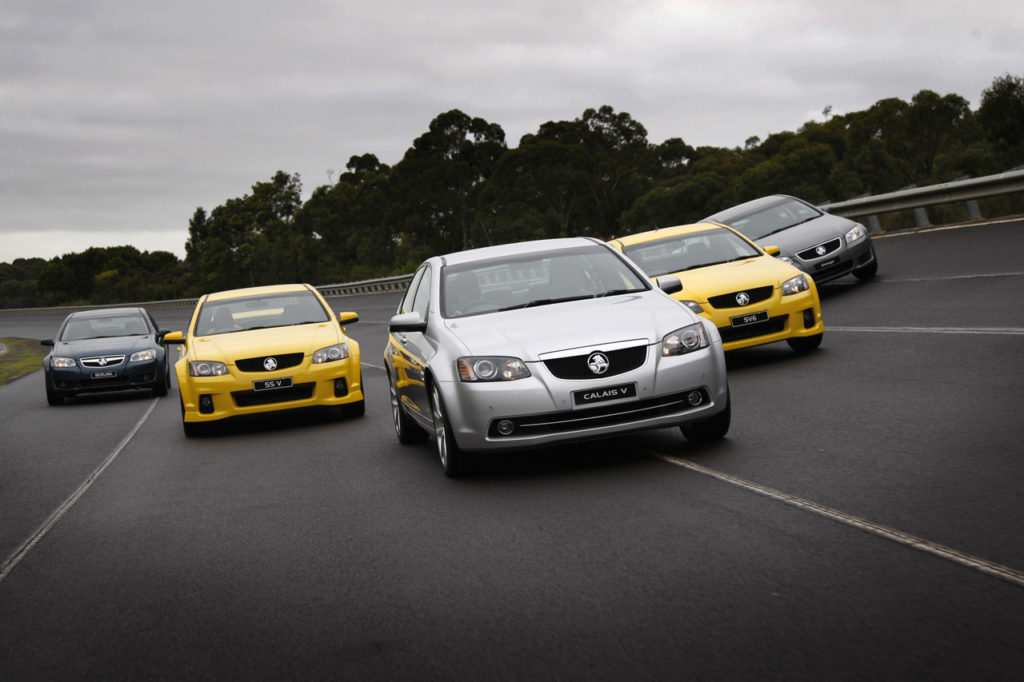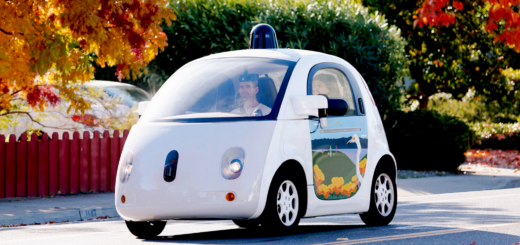Driverless Cars will Run in Packs
 By the year 2050 almost all vehicles will be fully automated. Hardly anyone will own a vehicle themselves, since there will always be an on-demand vehicle close by: a utility car to take the kids to soccer or bring you to the grocery store, a cargo vehicle for a trip to Home Depot or Ikea, a luxury sedan for a night out. Only vintage vehicle enthusiasts will bother to get or renew their driver’s licenses, which will require rigorous training and testing. Having mostly eliminated the human error factor, accidents will be very rare, and traffic flow will be smooth and efficient.
By the year 2050 almost all vehicles will be fully automated. Hardly anyone will own a vehicle themselves, since there will always be an on-demand vehicle close by: a utility car to take the kids to soccer or bring you to the grocery store, a cargo vehicle for a trip to Home Depot or Ikea, a luxury sedan for a night out. Only vintage vehicle enthusiasts will bother to get or renew their driver’s licenses, which will require rigorous training and testing. Having mostly eliminated the human error factor, accidents will be very rare, and traffic flow will be smooth and efficient.
What happens, however, along the drive to 2050? How will fully automated vehicles maximize safety and traffic flow when they are in the minority, still surrounded by inattentive human drivers in dumb vehicles that cannot sense or react to anything beyond their own synthetic skins? An essential support will be vehicle to vehicle (V2V) and vehicle to infrastructure (V2I) communications.
Basic V2V/I capabilities will soon be federally mandated in all new vehicles, to support driver-assist lane-keeping, vehicle-following, and collision-avoidance technology. Each enabled vehicle will, at a minimum, use short-range radio frequencies to continuously broadcast its GPS position, speed and direction, acceleration/deceleration, braking status, turn signal status and other information. High-bandwidth cellular communications will also be used by automated vehicles, to share sensory information and to connect with support services.
For automated vehicles, V2V will enable more cooperative, coordinated driving. Formal and informal protocols of interaction will emerge, leading to mutually beneficial behaviors such as informal pack formation and shepherding of non-automated vehicles.
A lone fully automated vehicle relies on data from its sensors, combined with a pre-existing, detailed road-map, as well as some real-time traffic information via a cellular or satellite network. Streams of sensor data are processed into symbolic representations: a car approaching from the left, a group of pedestrians on the street-corner, a truck coming from the opposite direction, a traffic signal above an intersection. The fully automated vehicle creates, in effect, a dynamic internal map of itself within its environment, and uses this map to make driving decisions, including collision avoidance.
Basic V2V will supplement vehicle sensor data with information from other V2V-enabled vehicles regarding their position, speed and direction. This will help prevent collisions with other V2V vehicles, whether human driven or fully automated. As soon as basic V2V communications exists, automated vehicles will use it for cooperative behavior. Detecting that a vehicle in the next lane wants to move over, a well-mannered vehicle will slow to open space for the other vehicle to make the lane change. A vehicle on a busy road may “wave in” another vehicle attempting to enter from a side street. And, of course, vehicles will snuggle in close behind each other on the freeway to reduce air resistance and improve fuel efficiency.
Much more is to be gained, however, with higher bandwidth communications. Vehicles will be able to share their internal maps and even raw sensor data. Each vehicle will overlay its own internal map with the internal maps of other vehicles. Combined with knowledge of the other vehicles’ position and directional information, the multiple maps will be accurately fitted together, providing each vehicle with an expanded and more accurate internal representation of the local environment. Each vehicle will then be able to “see” further down the road, and around corners and obstacles. Blind spots due to obstacles or glare can be filled in by another vehicle approaching from a different angle. Any conflicts detected (e.g., is that a big white truck, a white billboard, or just the sky?) will be flagged for immediate further cooperative processing.
In this new paradigm of shared information, non-automated vehicles without V2V will be “tagged” and cooperatively tracked. If any vehicle (or pedestrian) is behaving erratically or recklessly, warnings can be shared (including, potentially, with police vehicles). Even micro-environment information can be shared: “There is a large pothole at GPS location xyz1, and a deer grazing beside the road at xyz2.”
More advanced V2V opens the possibility of more advanced collaborative driving. There could be significant advantages to be gained by seeking out other fully automated vehicles and traveling in tight or loose packs. For one thing, if a given fully-automated vehicle is surrounded by other fully-automated vehicles, it is inherently safer than if surrounded by unreliable, non-cooperative, human drivers. A member of a pack also gains the advantage of “many eyes” looking at the same environment from slightly different angles, and sharing their perceptions.
More controversially, a pack could also collude to “block-in” human drivers to improve safety and traffic flow. For example, a pack of fully automated vehicles would know exactly when the next signal will turn green, based on vehicle to infrastructure communications (V2I), or could even negotiate a green light with a smart traffic signal. Their approach can then be timed to arrive at the signal just after it turns green, eliminating the need to slow to a stop and restart. A human driver, always inclined to “hurry up and wait”, could completely mess up this carefully choreographed approach. To prevent this, for the good of all, a tight cooperative pack could block the human driver from getting out ahead of them.
Alternatively, a loose pack might provide the greatest extension of “visibility.” A given fully automated vehicle will have a variable radius of high-reliability sensor information, depending on the nature of the environment. If that radius is, for example, 50 meters, then a pack spacing of 50-75 meters might maximize the extent and quality of shared environmental information.
An even looser spacing might provide traffic flow smoothing on a busy freeway. Today, with human drivers, busy freeways suffer from compression waves: restriction of traffic flow in one location, perhaps due to an accident, does not cause an even slowing of traffic behind it, but rather waves of stop-and-go congestion. With even a relatively low percentage of fully automated vehicles, however, it is possible to smooth the flow dramatically. A loose but even spacing of fully-automated, V2V-enabled vehicles could immediately begin to slow in coordination for miles behind the accident, thereby helping to slow other non-automated vehicles. In a more aggressive approach, micro-packs of connected vehicles could line up across lanes of the freeway to force the gentle slowing of all vehicles behind them, timing the slow-down just right to achieve smooth flow up to and through the cause of congestion.
Vehicle to infrastructure (V2I) communications will further support collaborative behavior, and in some cases orchestrate it. Fixed infrastructure on and along the roadways can support broadband wireless communications with, and among, vehicles. Smart roadways and surrounding instruments could count vehicles and measure average speed, provide wind, temperature and moisture information, and so on — and even warn of earthquakes or infrastructure failures as they begin. In return, the smart roadway will collect information from vehicles on roadway conditions such as potholes and cracks, and relay that into requests for maintenance. As suggested above, a V2I traffic signal could negotiate timing with traffic from all directions. The traffic signal could also participate in a shared environmental awareness, adding its overhead sensor data to the mix, and benefiting from the sensor data and pooled processing power of the vehicles.
Finally, the roadway communications infrastructure could connect fully-automated vehicles into a metropolitan traffic control system that could suggest alternate routes in response to planned or unplanned events, clear lanes for emergency vehicles, coordinate area or city evacuation traffic, update street maps, highlight construction, and so on. Broadband communications through roadway or cellular networks could also support “on-demand” expert human drivers that could “virtually” inhabit a vehicle to guide it in unusual circumstances, such as responding to the hand-signal commands of a policeman directing traffic.
Long before fully automated vehicles make up the majority of vehicles on our roadways, their influence will be felt. By acting collectively, rather than “autonomously,” they will help traffic flow more efficiently and safely. Tied to evolving smart infrastructure, they will help us inventory and improve our roadway infrastructure even as they get us from point A to point B.
Upcoming topics:
-
Security Concerns with Automated Vehicles and Intelligent Infrastructure
-
Automated vehicles in a Libertarian Nation
Save

2 Responses
[…] to cloud-based resources. They can upload road and performance data, communicate with each other to run in packs, and take advantage of traffic and weather […]
[…] to cloud-based resources. They can upload road and performance data, communicate with each other to run in packs, and take advantage of traffic and weather […]